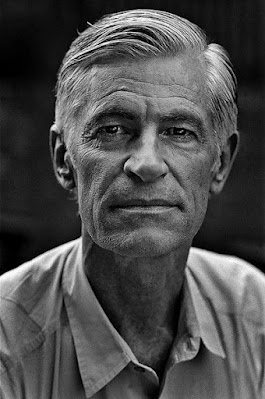------oOo--------
It's been quite a while since I posted an instalment in this series, so here is the one we are up to . . .
--------oOo--------
The Pulitzer and World Press Photos of the Year, continued:
Pulitzer Prizes for Photography:
Between 1942 and 1967 a Pulitzer Prize for Photography was awarded for photojournalism, that is, for photographs telling a news story. In 1968 that award was replaced by awards in two new categories:
- the Pulitzer Prize for Spot News Photography (photography in the nature of breaking news, as it has been called since 2000); and
- the Pulitzer Prize for Feature Photography (human interest and matters associated with new items).
World Press Photo of the Year:
From 1955 World Press Photo has awarded prizes for the best photographs in 10 categories, with an overall award for the image that "... is not only the photojournalistic encapsulation of the year, but represents an issue, situation or event of great journalistic importance, and does so in a way that demonstrates an outstanding level of visual perception and creativity".
The photographs are interesting not only in their own right but for being windows on history.
--------oOo--------
Award:
World Press Photo of the Year
Year:
1993
Photographer:
James Nachtwey
WPP of the Year Photograph:
Famine in Somalia - A Somali mother lifts up the body of her child, killed by malnutrition. Photograph and comments below.
Comments:
Text below from the World Press Photo site at:
Photographs of the Vietnam War and the American Civil Rights movement inspired James Nachtwey to become a photographer. While teaching himself photography, he worked as truck driver and as an apprentice news film editor.In 1980, after working for several years as a newspaper photographer in New Mexico, he moved to New York to begin a career as a freelance magazine photographer. His first foreign assignment was to cover civil strife in Northern Ireland in 1981 during the IRA hunger strike. Since then, Nachtwey has devoted himself to documenting wars, conflicts and critical social issues, photographing ordinary people in the cause of history. He has worked on extensive photographic essays in El Salvador, Nicaragua, Guatemala, Lebanon, the West Bank and Gaza, Israel, Indonesia, Thailand, India, Sri Lanka, Afghanistan, the Philippines, South Korea, Somalia, Sudan, Rwanda, South Africa, Russia, Bosnia, Chechnya, Kosovo, Romania, Brazil and the United States.He received numerous awards including two World Press Photo of the Year awards, five Robert Capa Gold Medals, the ICP Infinity Award and the W. Eugene Smith Grant in Humanistic Photography.
Photograph:
01 November, 1992
Bardera, Somalia.
A mother carries her dead child, wrapped in a shroud according to Muslim custom, to a mass grave for famine victims, outside the town of Bardera, Somalia.
The famine, which claimed the lives of more than 200,000 Somalis, was the result of regional drought and civil war. While a large portion of eastern Africa suffered from this drought in this period, Somalia was the only affected nation, which also faced ongoing war. In January 1991, opposing clans overthrew President Siad Barre, who had led the country for 21 years. Thereafter, the centralized Somali state crumbled and the country plunged into a state of lawlessness and social breakdown as clan warlords and their militias fought for power, armed largely with weapons supplied by the United States and the Soviet Union in the 1970s and 1980s. In addition to the thousands of civilians wounded and killed in the fighting, the militias also looted food reserves and incoming food aid.
In September 1992, the United Nations estimated that half of the aid sent to Somalia was stolen. One third to half of Somalia’s total population was internally displaced by this combination of famine and war. Many flocked to the market town of Bardera.
On 23 October 1992, The New York Times reported that 11,000 women and children in a refugee camp there were in desperate need of food. But Bardera, a town without any paved roads, was unprepared for the large numbers of refugees. Located at the junction of two heavily mined roads leading to the ports in Mogadishu and Kismayu, Bardera’s packed-dirt airfield could not function in the rain. Only half an hour by air from thousands of tons of food aid, in November Bardera’s death rate nevertheless continued to rise as battles between warring militias halted relief flights.
__________
Nachtwey had been injured previously in his work, but it was during his extensive coverage of the United States invasion of Iraq that he received his first combat injury. As Nachtwey, along with Time correspondent Michael Weisskopf rode in the back of a Humvee with the United States Army "Tomb Raiders" Survey Platoon, an insurgent threw a grenade into the vehicle. Weisskopf grabbed the grenade to throw it out of the Humvee: two soldiers were injured in the explosion, along with the Time journalists. Nachtwey managed to take several photographs of medic Billie Grimes treating Weisskopf before passing out. Both journalists were airlifted to Germany and later to hospitals in the United States. Nachtwey recovered sufficiently to return overseas to cover the tsunami in Southeast Asia of December 26, 2004.
--------oOo--------



No comments:
Post a Comment
Note: Only a member of this blog may post a comment.